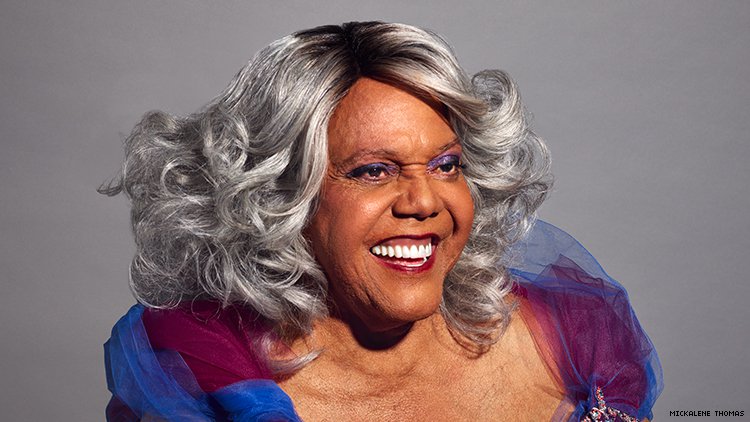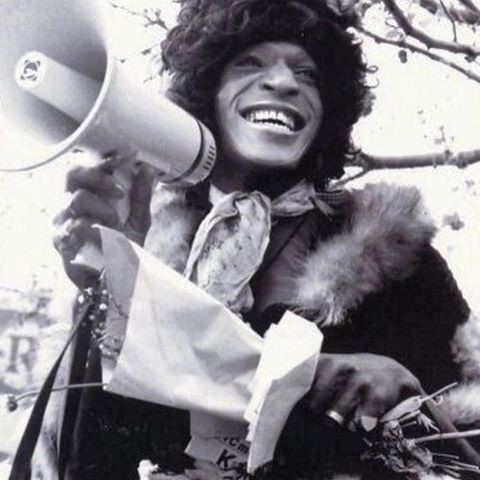Celebrating Stonewall: A Look at the LGBTQIA+ Movement in 1969 and Today
- Kathryn Evans and Lauren Betters
- Jun 28, 2019
- 6 min read
It is well known that transgender and gender non-conforming people of color were essential to the Stonewall Riots on June 28th, 1969. These riots are an iconic piece of history in the LGBTQIA+ rights movement. In celebration of the 50th anniversary of Stonewall, GELC is honoring the transgender and gender-nonconforming leaders of the LGBTQIA+ movement and taking a look at the rights of trans and gender-fluid individuals in 1969 and today. GELC also created a video highlighting some of our LGBTQ GNC clients, featuring interviews about their experiences facing discrimination on account of their sexual orientation. See how these courageous plaintiffs took on the fight for the LGBTQ community in their workplace and school.
At the time of the Stonewall Riots in 1969 in New York City, the country was just starting to learn about what it meant to be transgender. The first book to explain medical aspects of sex transitions had come out just three years earlier. In it, Dr. Harry Benjamin explained that transsexuals, transvestites, and homosexuals are all different, something that had not been made clear before then. He also argued that psychological treatment could not “cure” a transgender person, and recommended instead hormone therapy and surgery. Unfortunately, however, he referred to transsexualism as a “sexual disorder,” language that would be used for decades to come.
While the medical field advanced to provide gender-affirming healthcare to transgender individuals, the legal field was slow to follow. Some transgender New Yorkers in 1969 did have the right to change their legal name to match their gender identity. One year earlier, a New York civil court considered for the first time whether someone could change their legal name in these circumstances. The court decided a name change could occur only if the person’s anatomy had been changed to match their psychological gender, thereby creating an enormous obstacle of undergoing very new, expensive, and major surgeries in order to change one’s name. At this time, at least ten other states had allowed transgender individuals to change their legal sex.
The inability to change one’s sex impacted more than a person’s ID card. Since no states recognized marriage equality in 1969, marriage was unavailable for many transgender individuals who were deemed as having the same sex as their partner. Christine Jorgensen, who became famous in 1952 as the first American known to undergo gender-affirming surgery, was denied a marriage permit because she and her fiancée were both legally male. Her fiancée was also fired from his job as a typist when his employer found out about their wedding plans.
At this time there were no anti-discrimination laws to protect transgender and gender non-conforming people in the workplace. No federal court would even consider whether the Civil Rights Act of 1964 included transgender individuals until 1984. No U.S. city would pass an ordinance prohibiting discrimination on the basis of gender identity until 1975, and no state would do so until 1993.
In the past fifty years, much has changed, but many of the struggles that Rivera, Johnson, Griffin-Gracy, and DeLarverie faced in 1969 still exist today. There are still no federal protections from discrimination on the basis of gender identity and expression, nor any explicit recognition of transgender and gender nonbinary individuals under federal law. Further, the majority of our country still does not understand transgender individuals. A poll in 2017 revealed that 54% of Americans believe that gender is determined at birth, while 44% said that it can be changed after birth. Millennials were split 50/50, suggesting that society is slowly becoming more accepting.
One action that may be helping lower the stigma surrounding the trans community is that the American Psychiatric Association and World Health Organization both removed “gender identity disorder” from their lists of mental disorders. They now provide information about “Gender Dysphoria” and “Gender Incongruence” respectively, recognizing the emotional distress that TGNCI individuals can suffer when their biological sex is different than their gender identity. In addition, increased media representation of transgender and others who push the gender binary are becoming more popular and common (Transparent, Pose, Orange is the New Black, and RuPaul’s Drag Race), helping reduce transphobia. We are moving beyond the days of Christine Jorgensen, where the simple fact of being transgender stirred public fascination—and are beginning to appreciate transgender and gender non-conforming celebrities like Laverne Cox, Jazz Jennings, Janet Mock, Chaz Bono, and Jonathan Van Ness for their talents and activism.
Another challenge that transgender individuals have historically faced and still encounter today is access to healthcare. A 2015 study of nearly 30,000 transgender Americans revealed that 23% of respondents did not seek health care due to fear of being mistreated, and 33% did not seek healthcare because of the cost. Further, a third of those who did seek medical care reported a negative experience relating to their transgender identity, including being refused care; suffering verbal, physical, or sexual harassment; and having to teach their healthcare provider about transgender people. While the Affordable Care Act prohibits insurers and health care providers from discriminating against anyone on the basis of sex, the current administration has proposed new regulations that would exclude transgender people from that protection. GELC strongly opposes the new exclusion and is currently working with partners to issue public comments against the proposed regulations.
Despite the ongoing challenges, the legal field has made great strides along the path to equality for the TGNCI community. However, the question of whether discrimination against transgender individuals is discrimination on the basis of sex is still unsettled under Title VII and Title IX of the Civil Rights Act of 1964. In the upcoming term, the Supreme Court will decide whether Title VII prohibits discrimination against transgender people on the basis of their status as transgender or sex stereotyping and whether discrimination on the basis of sexual orientation is also sex-based discrimination. While some U.S. states and cities have strong prohibitions on gender-identity discrimination in the workplace, about half of the country lives without such protections. In fact, New York State only added these protections to its law earlier this year. These protections are critical to employees, as reports by the Equal Employment Opportunity Commission show that 45% of LGBTQ employees experience bullying and harassment on the basis of sexual orientation, and 90% of transgender or gender non-conforming employees experience gender-based harassment or assault in the workplace. Furthermore, the armed forces, one of the largest employers in the country, explicitly prohibits anyone with gender dysphoria from enlisting, and service members can be discharged for seeking gender-affirming medical treatment.
Under the Obama Administration, both the EEOC and the Department of Justice released statements that gender identity discrimination was a form of illegal sex discrimination under Title VII. In 2017, the Trump Administration reneged on those statements. In fact, one of the Trump Administration’s first actions was to revoke guidance that had required schools to allow students to use the restroom and locker room consistent with their gender identity. Luckily, the Obama-era guidance has had a lasting effect, as many school districts institute their own policies permitting all students to use the facilities that match their gender identity.
Lastly, a tribute to Marsha P. Johnson, whose body was found in the Hudson River in 1992, would not be complete without recognizing the violence that the transgender community continues to face today. While the Matthew Shepard and James Byrd Jr. Hate Crimes Prevention Act of 2009 makes it a federal crime to willfully injure someone on the basis gender, gender identity, or sexual orientation, violence continues. On Transgender Day of Remembrance in 2018, twenty-three individuals in the U.S. were listed as being killed that year for being transgender. TGNCI people still face increased police harassment and violence, including trans women frequently being arrested on prostitution charges, whether or not they are actually sex workers. As of June of 2019, only five states have prohibited gay and trans panic defenses (used by criminal defendants to excuse their crimes against transgender individuals), and New York State has passed similar legislation that Governor Cuomo is expected to sign into law.
In the words of the incredible transgender actress and activist Laverne Cox, “By truly embracing transgender equality, I believe we can all begin to define what it meant to be a man or a woman on our own terms and liberate ourselves from the gender oppression we impose on ourselves and each other.” You can celebrate Pride month by calling on your Senator to support the Equality Act; fighting for anti-discrimination laws in your state or city; asking your employer to institute more trans-inclusive policies like gender neutral restrooms; supporting the work of transgender and gender non-conforming artists, entertainers, and authors; donating to organizations that support the TGNCI community; and educating yourself on how to be a good ally.












































